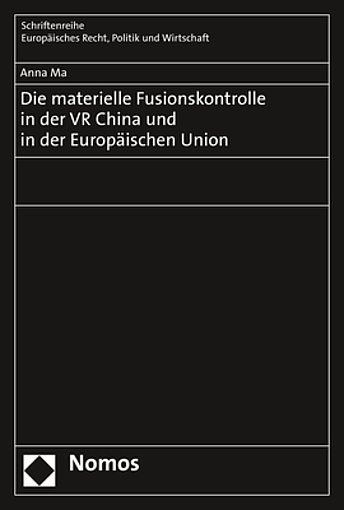englischThis paper examines the similarities and differences between the European and Chinese merger control systems, thereby considering the decision-making practice of the responsible competition authorities in China and the EU.
Merger control is an important economic policy instrument both in China and in the EU. Traditionally, merger control essentially serves the purpose of preventing unwanted monopolies and other structural impairments of competition. In the EU, merger control is an important instrument of strengthening competition and the market economy in the inner-European market. Given that China considers itself to be a socialist country, the fact that China also has introduced a merger control system that largely meets international standards is remarkable. In a socialist country, the economic system is usually a planned economy instead of a market economy. Competition does not play a comparable role. Nevertheless, China created a merger control regime which was strongly influenced by European merger control in 2008. In many instances, even the same terminology was incorporated into the provisions. European merger control thus served as a model for the creation of Chinese merger control.
Despite these similarities, there are also significant differences between European and Chinese merger control. These special features lie, in particular, in the consideration and weighting of non-competitive factors, such as public interest or national economic development. The deviations are due to the functions and objectives of the Chinese merger control regime.
Die vorliegende Arbeit untersucht die Gemeinsamkeiten und Unterschiede der europäischen und chinesischen Fusionskontrolle. Insbesondere die bisherige Entscheidungspraxis der zuständigen Wettbewerbsbehörden in China und der EU wird hierbei berücksichtigt.
Die Fusionskontrolle ist in China wie in der europäischen Union ein wichtiges wirtschaftspolitisches Instrument. Im traditionellen Sinne dient die Fusionskontrolle im Wesentlichen dem Zweck, ungewollte Monopolbildungen und andere strukturelle Wettbewerbsbeeinträchtigungen zu verhindern.
In der EU ist die Fusionskontrolle ein wichtiges Mittel zur Stärkung des Wettbewerbs und der Marktwirtschaft auf dem europäischen Binnenmarkt. Dass auch China über eine Fusionskontrolle verfügt, die weitgehend internationalen Standards entspricht, ist erstaunlich angesichts der Tatsache, dass China sich als ein sozialistisches Land versteht. In einem solchen herrscht in der Regel eine Planwirtschaft anstelle der Marktwirtschaft, der Wettbewerb spielt in diesem System keine vergleichbare Rolle.
Dennoch hat auch die VR China im Jahre 2008 eine Fusionskontrolle erschaffen, die sich erkennbar an der europäischen Fusionskontrolle orientiert. Teilweise werden sogar gleiche Begrifflichkeiten verwendet. Die europäische Fusionskontrolle diente somit als Vorbild zur Schaffung der chinesischen Fusionskontrolle.
Trotz dieser Gemeinsamkeiten bestehen jedoch auch signifikante Unterschiede zwischen der europäischen und der chinesischen Fusionskontrolle. In materiell-rechtlicher Sicht liegen diese Besonderheiten insbesondere in der Berücksichtigung und Gewichtung von wettbewerbsfremden Faktoren, wie beispielsweise dem Allgemeinwohl oder der nationalen Wirtschaftsentwicklung. Dies ist insbesondere auf die Funktion und Zielsetzung der chinesischen Fusionskontrolle zurückzuführen.



